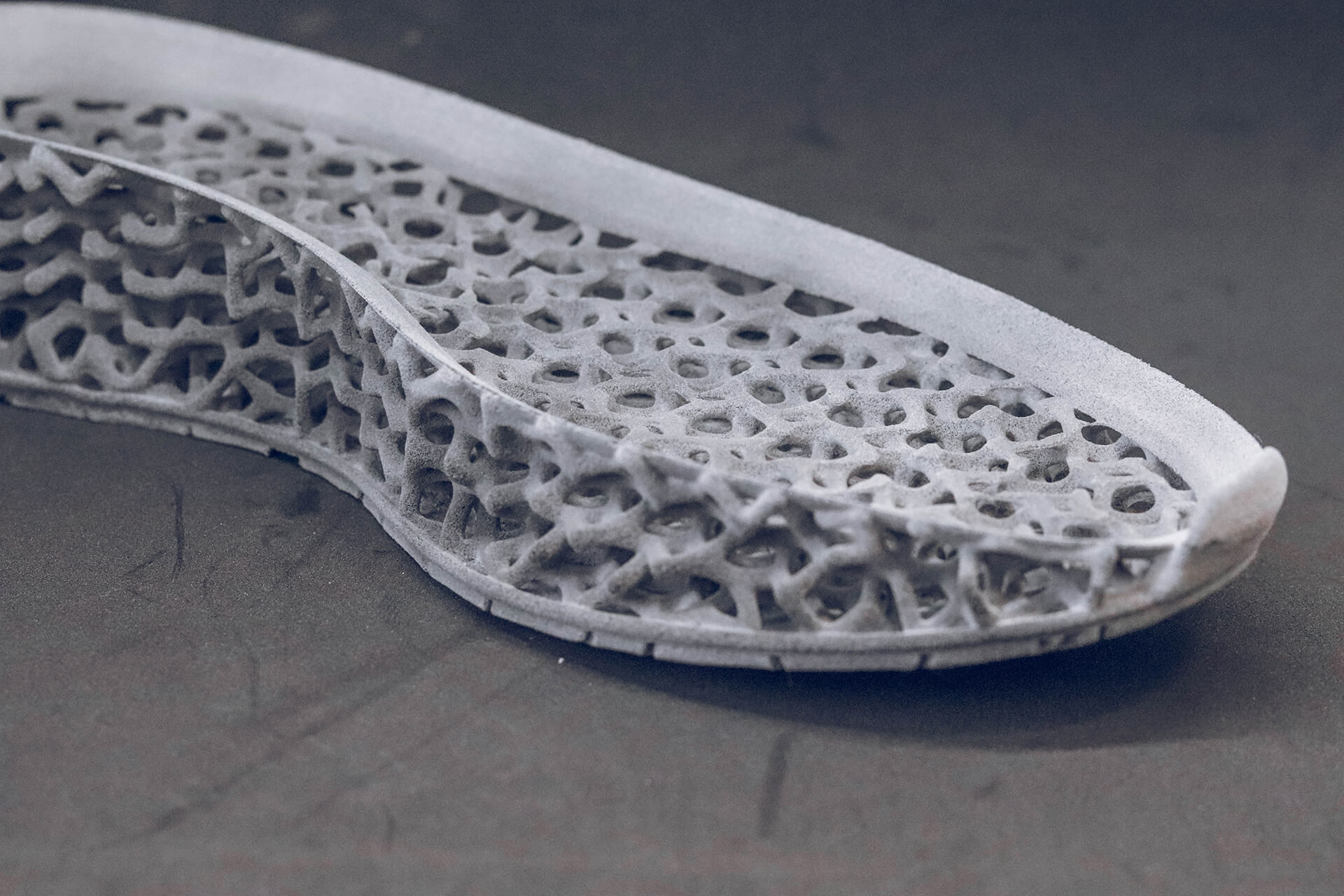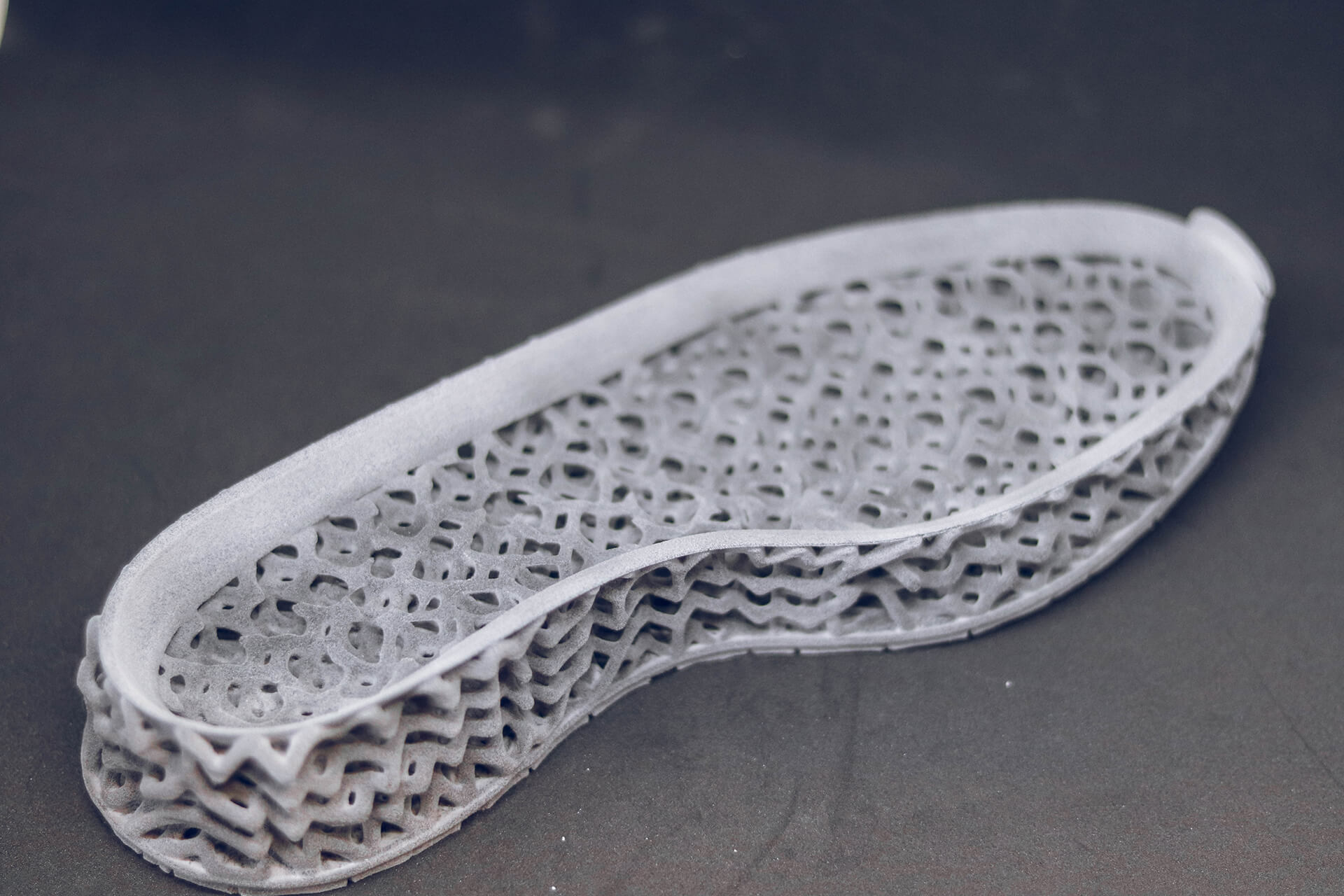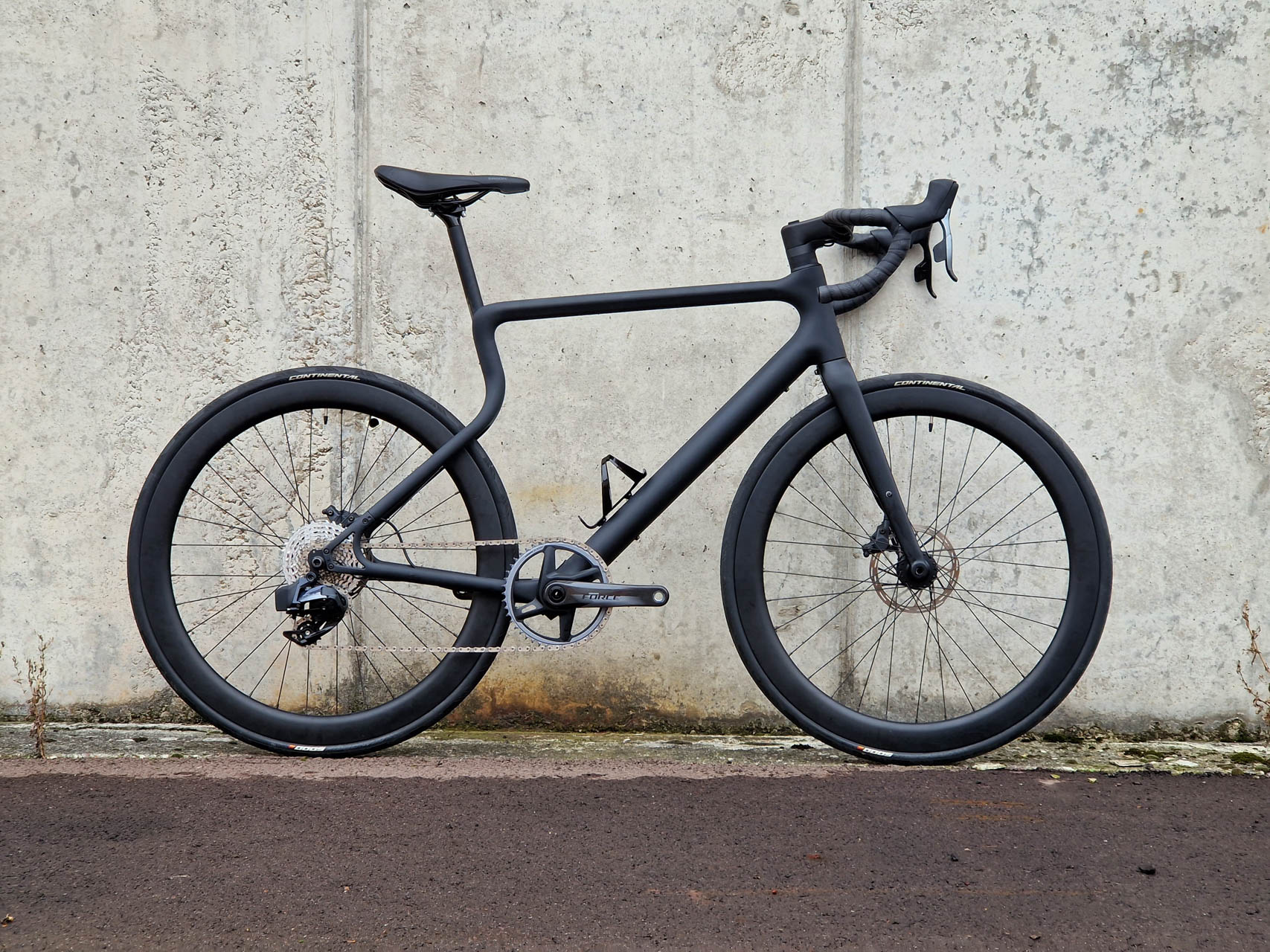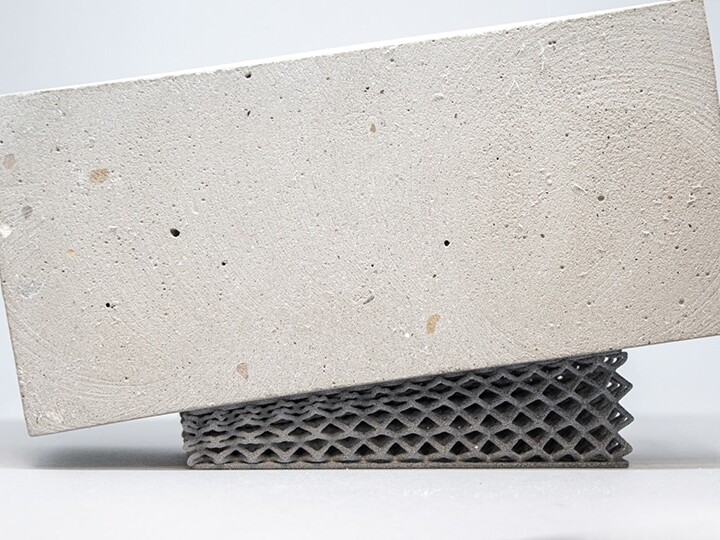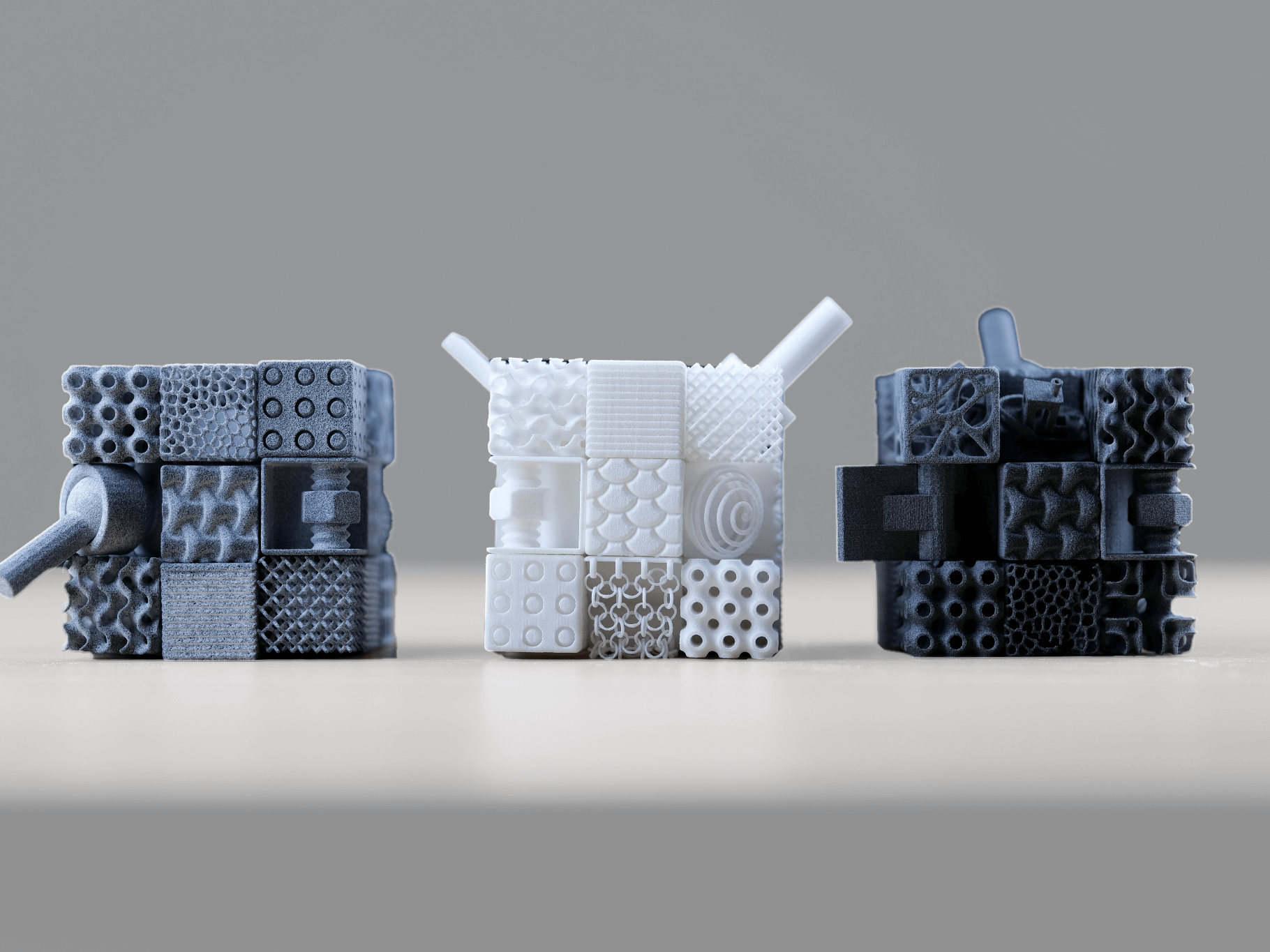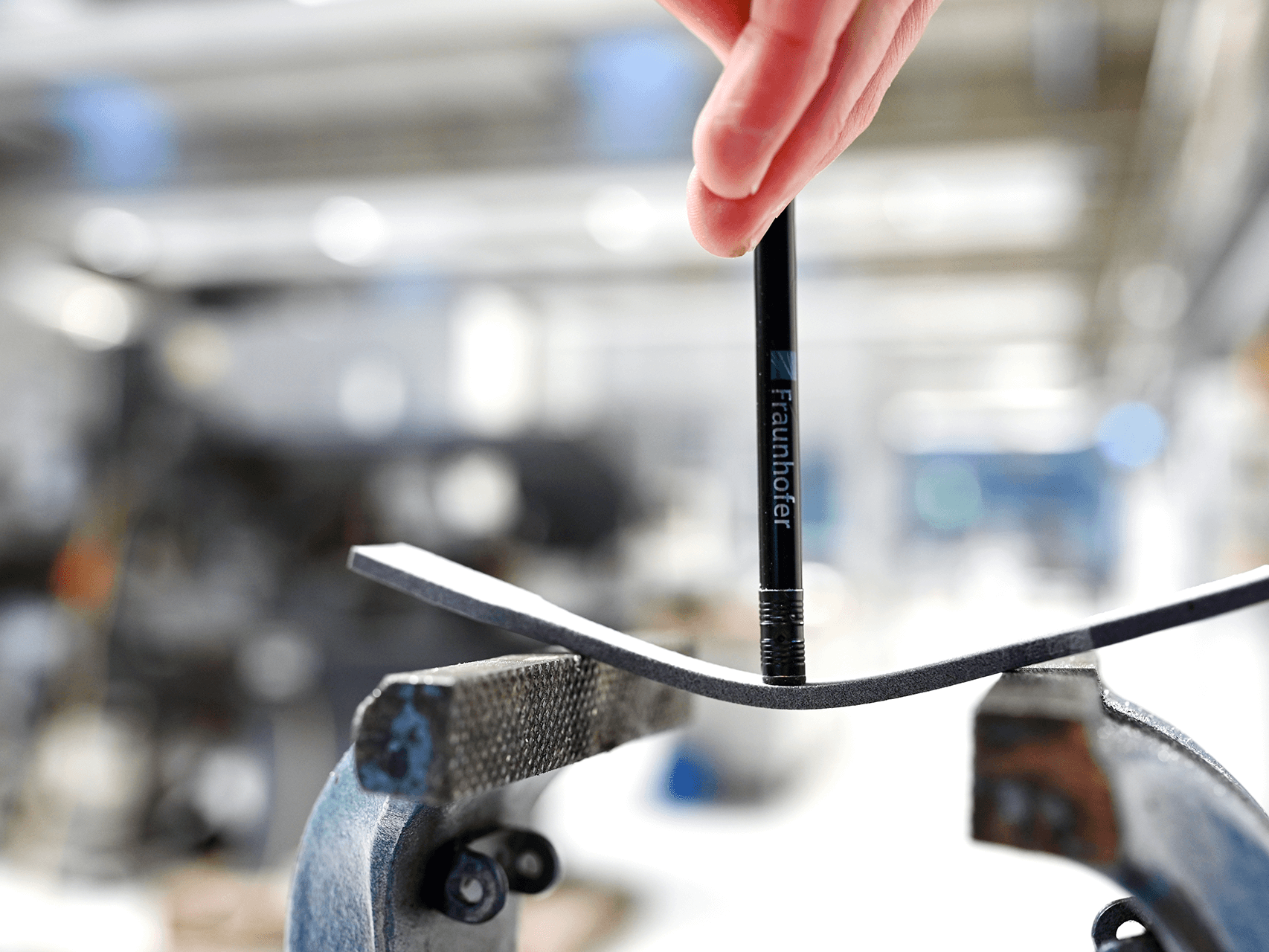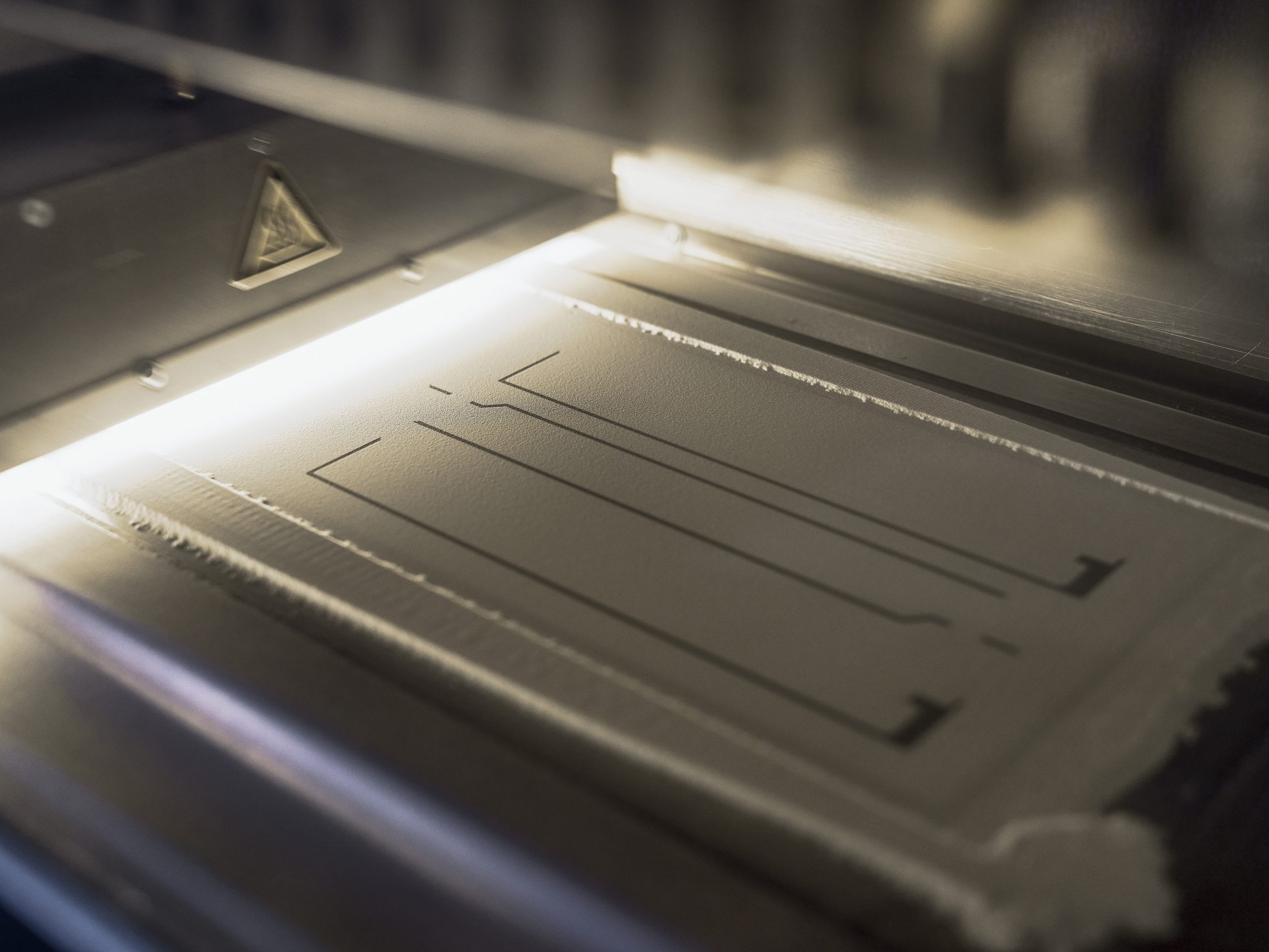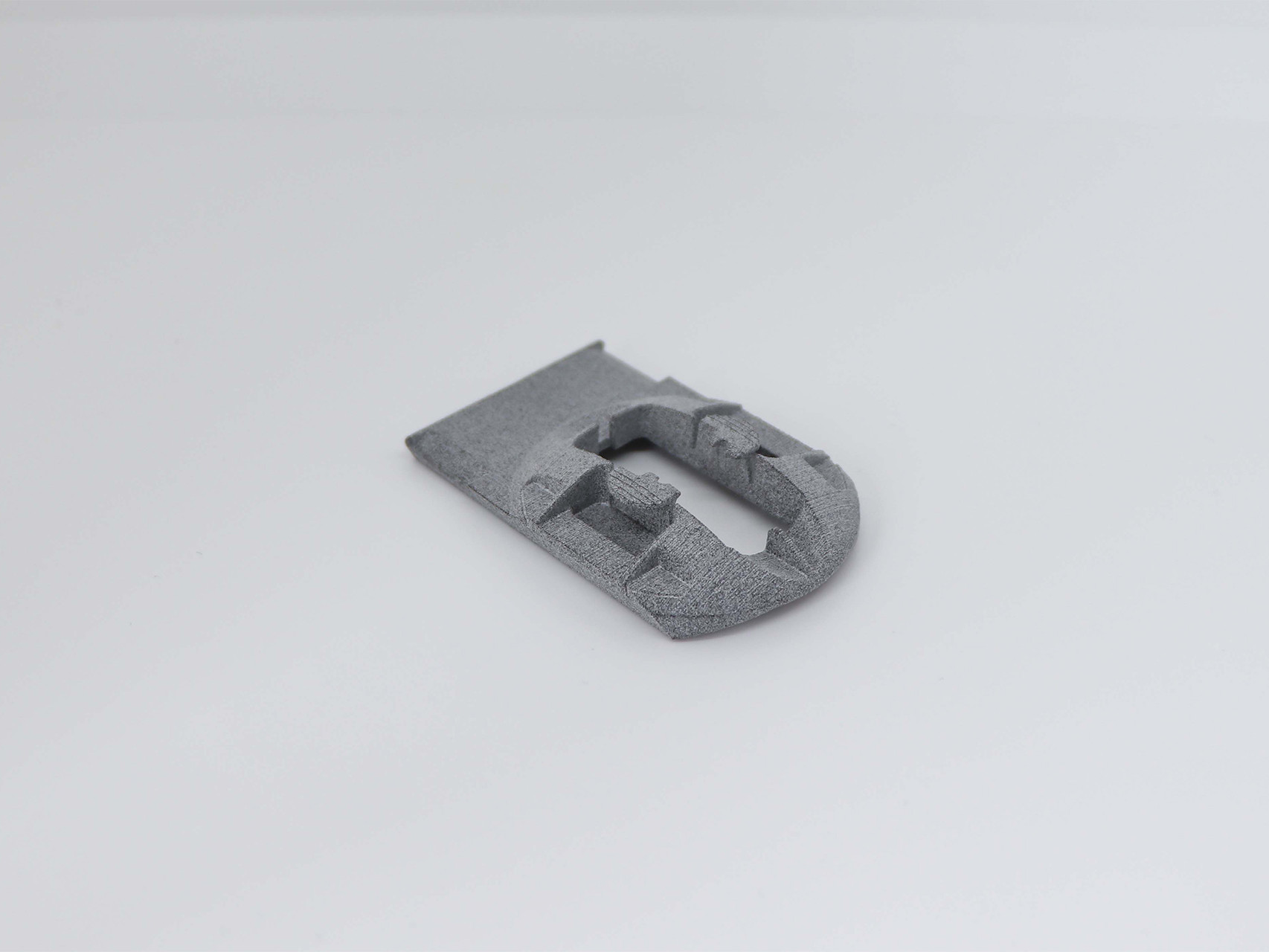- Home
- Case Studies
- Consumer Goods
- Additive shoe production 4.0
Additivemanufacturing forShoe production 4.0
How 3D printing is revolutionizing the future of running. For a long time, all shoes of a model series were the same. The only exceptions were expensive, tailor-made special models for elite athletes.
Now there is new innovation potential for shoe manufacturers: 3D printing from voxeljet enables the production of tailor-made shoes that could even offer consumers performance and comfort enhancing functions. Additive manufacturing processes, such as voxeljet‘s High Speed Sintering, pave the way for the additive shoe production of tomorrow through customized production and material development.
Polymer 3D printing for customized shoe components
The fact that such custom-made shoes can take individual foot shapes, body weights and stride lengths into account also offer a particular benefit for end-customers. From the manufacturer’s point of view, however, it is not just the customer benefits that speak in favor of the 3D Polymer High Speed Sintering (HSS) process. With HSS, almost all production parameters can be adjusted in order to enable more economical, faster, more environmentally friendly manufacturing processes and at the same time enable the tailoring of the process to different materials.
Hardly any product manager from the manufacturing industry is currently able to avoid the hype topic of „Lattice Structures“. These are abstract, CAD-generated grid designs that take nature as a model. These designs give products maximum stability and durability and create enormous material and weight savings. No wonder, then, that even market-leading sports shoe manufacturers have a great interest in additive manufacturing processes. With 3D-printed lattice structures, production costs can be reduced and, thanks to material savings, the manufacturing process also protects the environment. Non-sintered plastic can, depending on the process and material, be recycled and fed back into the production process.
The Advance of 3D printing technologies in the footwear industry
Various shoe manufacturers are already working with 3D printing techniques in the production of midsoles or other shoe components such as insoles. Liquid resin-processing additive technologies are common methods in which the areas to be sintered are selectively exposed to light and thus hardened. Although these methods offer the possibility of printing waterproof shoe components with fine details and good surface properties, the processed materials and thus the printed parts themselves are comparatively heavy.
Another additive manufacturing technique is Fused Filament Fabrication (FFF). In this method, a layer of molten plastic filament is applied as a strand and glued. The advantage of high speed sintering is the higher production speed, material diversity, constant layer times and thus easier thermal management and geometric freedom. In contrast to the FFF, the HSS does not require support structures to stabilize the printed components. The unprinted powder supports the components in the job box. This allows full utilization of the HSS job box.
Most additive processes operate geometry-oriented; they produce honeycomb or other bionic lattice structures for the different stress zones in the shoe. As a result, the wall thicknesses of the structures, for example, must become thicker in order to obtain a greater degree of stability. The HSS process, on the other hand, works with a variable ink input, which allows different material properties such as strength or rigidity within a lattice structure but also in solid material. Different amounts of infrared (IR) absorbing ink can be imprinted on the stressed areas of a shoe sole. The component obtains a higher strength at this point during the sintering process. As a further alternative, as with all additive manufacturing processes, with HSS, you can also work with lattice structures to achieve different degrees of strengths on top. With voxeljet‘s HSS grayscale printing, shoe manufacturers can optimize individual sectors of the 3D-printed shoe component for specific loads in terms of wearing comfort, stability and elasticity.
Polymer High Speed Sintering (HSS) process and grayscale printing: how it works
HSS grayscale from voxeljet is a 3D printing process for the creation of three-dimensional parts with variable target properties. The material properties of the body produced can be individually influenced in all three dimensions. Such properties could be the mechanical strength or elasticity and material density and thus weight and center of gravity of the 3D printed object. The big advantage: these varying material properties are not visible in the later component.
In the HSS process, a thin layer of plastic powder, such as TPU, EVA or TPE is applied to a heated building platform. Subsequently, an inkjet print head moves across the platform and selectively applies an infrared light-absorbing ink to areas of the building area. Once completed, an infra-red light radiates onto the construction platform. The printed areas of the plastic powder absorb the heat, which causes them to sinter with the underlying layers.
Webinar: HSS 3D printing
In this workshop we will present our HSS technology in detail: From open source conception to scaling and production possibilities.
After the sintering process is complete, the construction platform is lowered by one layer thickness, and the next layer of plastic powder is applied and printed. This process is repeated until the construction of, for example, a midsole, is completed. Subsequently, the entire construction space with the sintered parts cools down either inside or outside the printing system. Finally, the shoe sole can be removed from the surrounding powder and further processed. Due to the selective temperature input, the unprinted powder remains loose and can be reused for further printing processes, depending on the material used.
The gray value, grayscale or gray level indicates the amount of ink printed into the powder. Depending on the material used, up to six different gray levels can be printed into the powder material. The inkjet printheads are controlled via bitmaps. Since the printhead controls the amount of infrared-absorbing ink in the HSS process, the drop size of the absorber and thus the gray value per volume can be changed.
The darker the gray tone, the more thermal energy can be absorbed by the printed material from the IR lamp. This not only gives the sole its three-dimensional shape, but also allows three-dimensional mechanical properties to be added and integrated at the same time.
Furthermore, the grayscale can be combined with dithering (simulation of actually non-existent intermediate steps via certain pixel arrangements / rasterizations). This allows even finer adjustment of the absorption coefficient, the energy input and thus the effective temperature of the powder material, which has a further influence on the material properties.
Open Source enables free customization to material requirements
For HSS, voxeljet relies on an open source software ProPrint for controlling its 3D printing systems. The highlight of the open source solution: Customers can freely customize all print parameters for their own material requirements. ProPrint and the integrated voxeljet data analysis tool Vamos, for example, allow free control of the temperature entry with which the printed powder is to melt. Layer thickness, ink transfer and general process sequences are also freely adjustable.
The young technology of 3D printing expert voxeljet has great potential for the shoe industry to reinvent the shoe. Material diversity, resource conservation, lightweight construction, customization and performance enhancement for end customers are just a few of the potential benefits.
Technical specifications of greyscale printing
- Different degrees of hardness printable via ink input
- Up to 6 gray levels possible
- Grayscales variable regarding energy absorption depending on the material
- Better edge sharpness compared to dithering
- High level of detail
- Higher part strength than sole dithering
- Further combinations possible with dithering for even more variation
- Smoother surfaces
Further Case Studies
3d printed joysticks for tractors and machines
For Lindner Traktorenwerke, 3D printing is already an alternative to injection molding. For example, for customized joysticks and control elements for their tractors.
URWAHN – 3D printing in bike manufacturing
To produce its e-bikes, URWAHN has focused on reshoring and lean management and is achieving these goals through additive manufacturing. Learn what role the voxeljet technology plays.
HSS Material Network – Proof of Concept TPU Launhardt
The HSS Material Network has published a new proof of concept. The TPU from the manufacturer Launhardt is one of the softest on the market.
Industrial Polymer 3D Printing Review: An extensive comparison of voxeljet HSS, HP MJF, and SLS
Whats the difference between HSS, MJF and SLS polymer 3D printing? Get to know the three main AM technologies for polymers in this extensive comparison.
HSS Material Network – Proof of Concept HDPE
Together with Fraunhofer IPA we have qualified the polymer HDPE for additive manufacturing within our HSS Material Network.
HP Multi Jet Fusion and voxeljet High Speed Sintering in comparison
The 3D printing processes MJF and HSS in comparison: Where are the differences and advantages for users?
Polymer sintering in custom mechanical engineering
With High Speed Polymer Sintering, prototypes can be realized much faster and economically viable.
3D Printing Solutions
Want to learn more about us and 3D printing? Click here for the entire voxeljet solution portfolio.



















